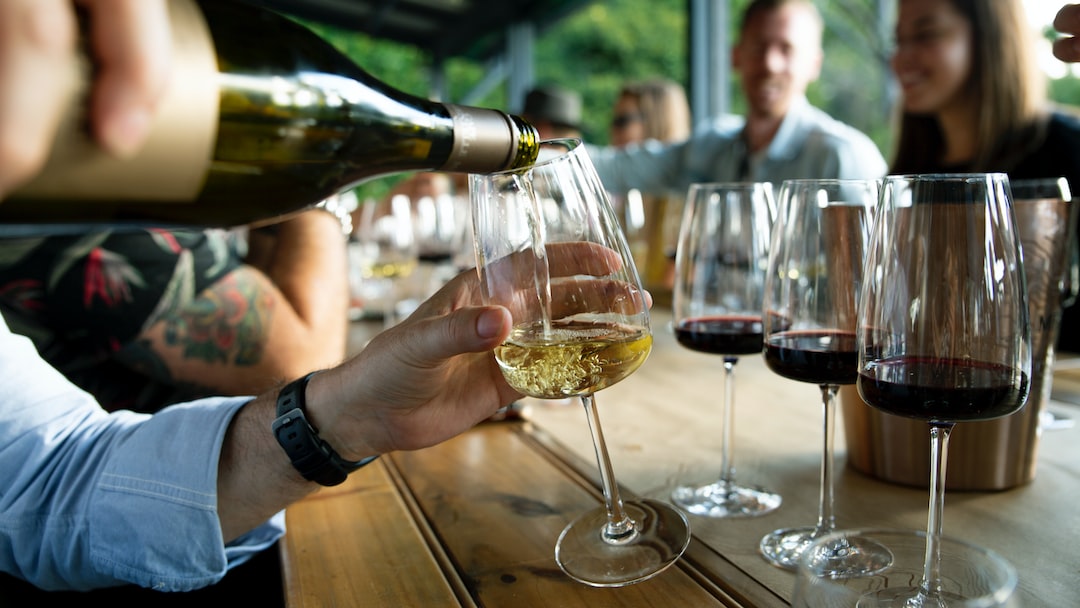
How Red Wine is Made: A Guide
Share
Red wine is not just a beverage; it's a craft, a narrative of the land, and the passion of those who make it. The journey from vine to bottle is a fascinating one, steeped in tradition yet embracing modern innovation. This guide invites you to explore the meticulous process behind the creation of red wine, revealing the steps and decisions that contribute to the complexity and allure of your favorite reds. From the selection of grapes to the final act of bottling, each phase is a testament to the art of winemaking.
The Art of Grape Selection
Understanding Terroir
The foundation of any exceptional red wine is the quality of the grapes, which is significantly influenced by the concept of terroir. Terroir refers to the unique combination of factors including soil, climate, and topography that give a wine its distinctive character. Winemakers must understand their terroir to select grape varieties that will thrive in their vineyards. The grapes' flavor profile, acidity, and tannin structure are all shaped by these environmental conditions, which in turn dictate the wine's potential.
Choosing the Right Varietal
Selecting the appropriate grape varietal for the terroir is crucial. Each grape has its own set of requirements for optimal growth and flavor development. For instance, Cabernet Sauvignon, known for its popularity and robust structure, prefers warmer climates which help in developing its rich flavors and tannins. In contrast, Pinot Noir is more delicate and thrives in cooler regions, as discussed in our article on Why are Cabernet Sauvignons So Popular?. The grape selection process sets the stage for the type of red wine that will be produced.
Harvesting with Precision
Timing the Harvest
The decision of when to harvest the grapes is one of the most critical choices a winemaker must make. Grapes should be picked at the peak of ripeness when sugar levels, acidity, and tannins have reached a balance that aligns with the winemaker's vision for the wine. Harvesting too early or too late can lead to wines that are either overly acidic or lack structure.
Manual vs. Mechanical Harvesting
Winemakers must also decide between manual and mechanical harvesting. Hand-picking grapes allows for selective harvesting, ensuring only the best fruit is chosen and preserving the integrity of the grapes and the vineyard. Mechanical harvesters can quickly collect grapes but may compromise the selection process and potentially damage the fruit and vines.
Crushing and Destemming
The Role of Crushing
Once the grapes are harvested, they are taken to the winery to be crushed. Crushing breaks the skins and releases the juice from the grapes. This process is gentle to prevent the seeds from being crushed, which could release unwanted bitter compounds into the wine.
To Destem or Not to Destem
Destemming is the process of removing the grape stems before or after crushing. Stems can add tannins and other compounds that influence the wine's flavor and structure. Some winemakers choose to include stems in the fermentation for added complexity, while others prefer to remove them for a smoother wine.
Fermentation: The Birth of Wine
The Science of Fermentation
Fermentation is the magical process where sugar in the grape juice is converted into alcohol by yeast. This transformation takes place in tanks, barrels, or open vats, and can last from a few days to several weeks. Temperature control is vital, as too high temperatures can kill the yeast and halt fermentation, while too low temperatures can result in an incomplete fermentation.
Managing the Cap
During fermentation, the grape skins and solids rise to the surface, forming a "cap." The cap must be managed through techniques like punching down or pumping over to ensure even fermentation and to extract color, flavors, and tannins from the skins.
Maceration: Extracting Color and Flavor
The Importance of Skin Contact
Maceration is the period when the grape skins remain in contact with the juice, and it's crucial for red wine production. The length of maceration can vary, affecting the wine's color, tannin structure, and flavor profile. Longer maceration results in more profound color and more complex tannins, while shorter maceration produces lighter, fruitier wines.
Deciding on Maceration Length
Winemakers must decide on the appropriate maceration length based on the grape varietal, desired wine style, and vintage characteristics. This decision can dramatically alter the final wine, as it influences not just the sensory aspects but also the wine's aging potential.
The Art of Aging
Choosing the Right Vessel
After fermentation, red wines are often aged in oak barrels or stainless-steel tanks. Oak aging can impart flavors like vanilla, spice, and smoke, and allows for the slow introduction of oxygen, which softens tannins and matures the wine. Stainless steel preserves the fruit's natural character and freshness, as seen in our discussion about Wine Aging and Its Effects on Color.
Determining the Duration of Aging
The aging process can last from a few months to several years, depending on the type of wine being produced. Full-bodied reds with high tannin content, such as Cabernet Sauvignon, benefit from longer aging to reach their full potential, while lighter reds may be best enjoyed young.
Blending: Crafting the Final Profile
The Purpose of Blending
Blending involves mixing different grape varietals, vineyard lots, or barrels to create the final wine profile. It's an opportunity for winemakers to fine-tune the balance and complexity of the wine, correcting any deficiencies and enhancing its strengths.
The Winemaker's Touch
The blending process is where the winemaker's skill and creativity shine. Decisions made during blending have a significant impact on the wine's style, flavor, and aroma. Blending can be as simple as adjusting the proportion of grape varieties or as complex as combining wines from different years (non-vintage) to achieve consistency.
Bottling and Beyond
The Bottling Process
Bottling is the final step in the winemaking process. The wine is typically filtered to remove any remaining solids, and then it's transferred into bottles where it may continue to age, or be ready for immediate consumption. The type of closure—cork, screw cap, or synthetic—can also influence the wine's development over time.
The Role of Bottle Aging
Some red wines improve with bottle aging, as their flavors evolve and mature. This period can highlight the wine's nuances and add layers of complexity. However, not all wines are meant for long-term aging, and knowing when to open a bottle is part of the enjoyment of wine, as explored in our article on Creating Perfect Wine Pairings at Home.
In conclusion, the process of making red wine is an intricate dance of science, art, and nature. Each step, from grape selection to bottling, requires careful consideration and skill. The result is a beverage that not only reflects its origins but also the vision and dedication of the winemaker. As you pour your next glass of red, consider the journey it has made and the craftsmanship that has shaped its character.



